Powered by Service Level Objectives
SLOs that scale with you
Giving SRE and engineering teams the context they need to balance reliability, speed, and cost






Bringing SLOs to Life
In this webinar, Nobl9 reliability experts Dan Sepich and Jeremy Cooper will show how SLO Annotations help teams connect key events like deployments, incidents, and tickets directly to their SLOs.
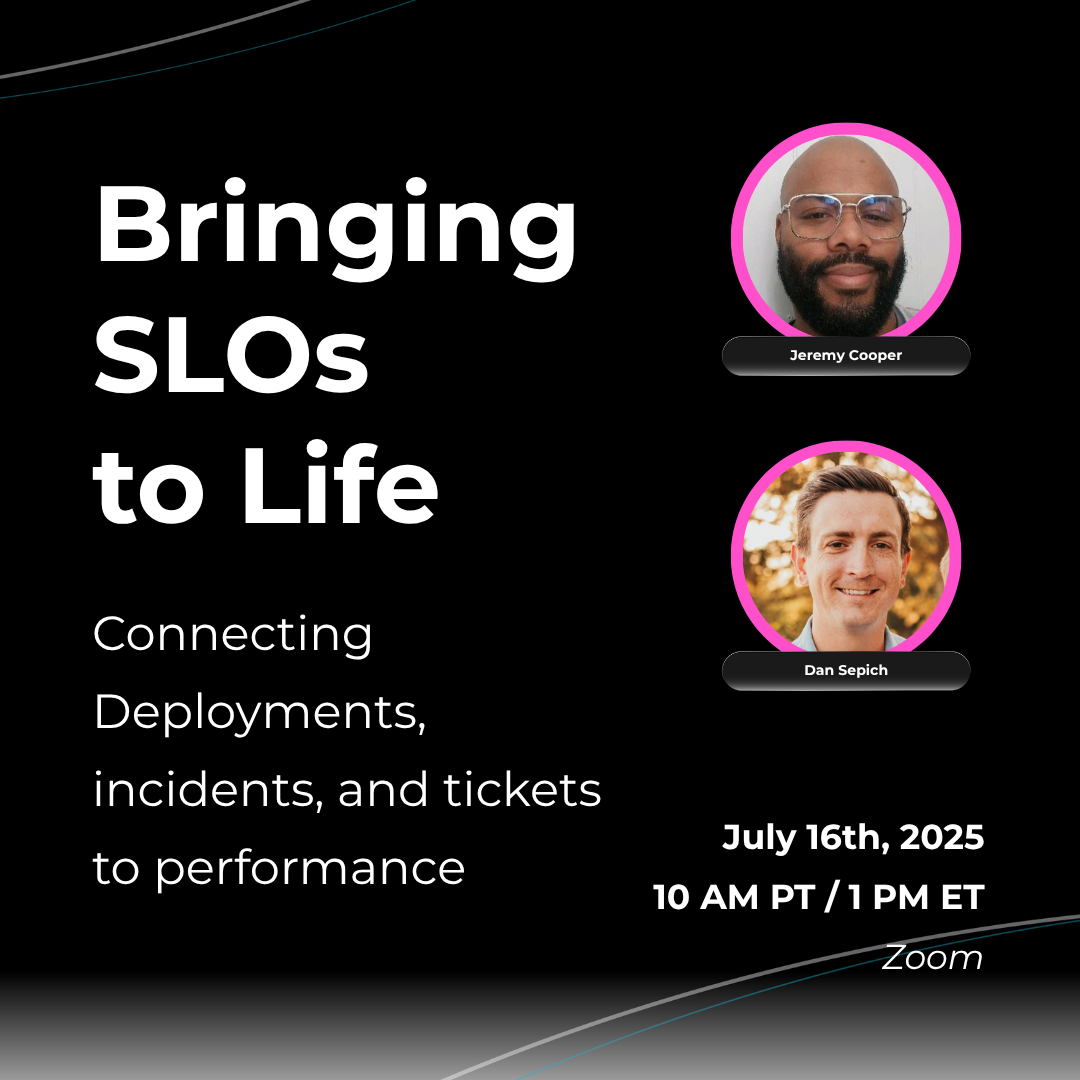
Assessing SLO Maturity
SRE consultant Amin Astaneh introduces a practical SLO maturity model designed to help teams evaluate where they stand and how to level up.

Visibility ≠ Clarity
Traditional observability gives you visibility, but not clarity. It tracks uptime, latency, and MTTR, but none of that tells you whether your customers are actually having a good experience.
These tools help keep services available, but they stop short of answering the question that matters most: Is this good enough for the people using it?
When reliability is managed through dashboards and alerts, it turns into a reactive numbers game. Teams get flooded with noise. They are forced to respond without context, and are left without a way to prioritize, plan ahead, or connect their work to customer expectations.
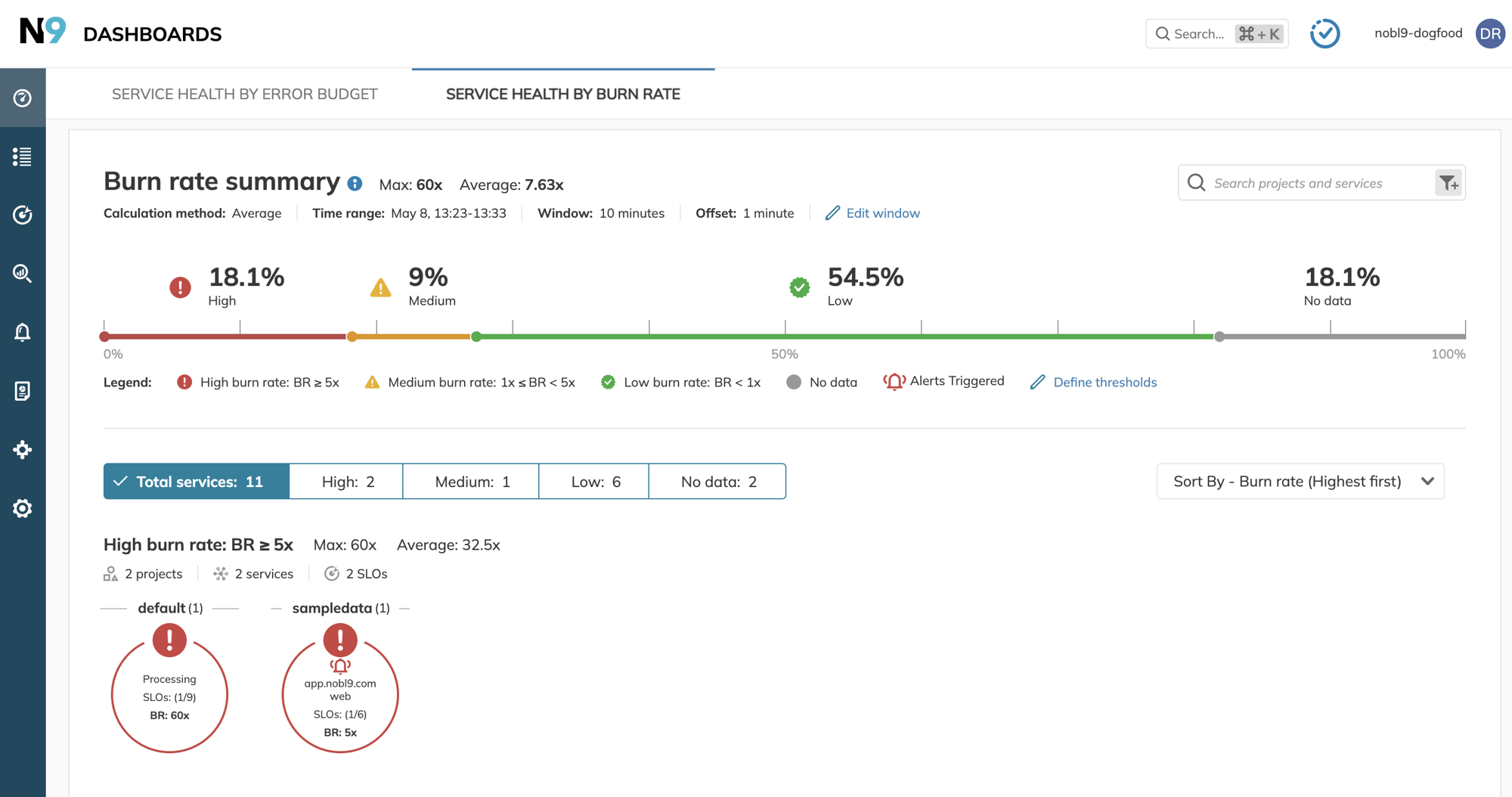
The solution isn’t more monitoring.
It’s a structured approach to defining reliability in terms of user experience and business value. That’s where the shift begins.
The SLO Paradox
Anyone who understands modern reliability practices agrees on one thing: SLOs are the right way to manage service health. They're outcome-focused, grounded in user experience, and provide a common language across engineering, operations, and business stakeholders.
But the moment you try to implement SLOs at scale,
the whole thing becomes... a mess.
Articles and Webinars
How to Sell Reliability to a Skeptical Exec?
Learn how to effectively communicate the value of reliability to executives by focusing on business risks, outcomes, and clear, repeatable messages.
Read MoreCan SLOs protect reliability when team experts leave?
Learn how to safeguard reliability knowledge when experts leave by documenting the why behind SLOs, integrating them into team culture, and fostering a reliability-focused environment.
Read MoreSLOs Within the ITIL Service Level Management Framework
Enhance ITIL service level management with SLOs for real-time reliability and improved user experience. Discover how Nobl9 bridges the gap between theory and practice.
Read MoreStandardizing Reliability at Scale with Nobl9 and AWS
Learn how a global enterprise standardized reliability at scale using Nobl9 and AWS CloudWatch to improve user experience and operational efficiency.
Read More2025-08-20 Assessing SLO Maturity Webinar
Learn to assess and enhance your SLO maturity with practical insights from SRE consultant Amin Astaneh, driving better reliability outcomes for your business.
Register Now!2025-07-16 Mastering Annotations Webinar
Learn how to connect SLOs with deployments, incidents, and tickets to enhance performance insights and decision-making in this informative webinar hosted by Nobl9 experts.
Register Now!Case Studies and Reports
Read AllAWS & Nobl9 Case Study: Reliability in a Global Ticketing Platform
Learn moreAWS & Nobl9 Case Study: Scaling Reliability Across Complex Systems
Learn moreWhite Paper and Case Study: Mastering SLOs for ROI, Reliability and Cost Savings
Learn moreIDC Report - 7 Steps to Creating Effective SLOs | Nobl9
Learn moreA Guide to Reliability Platform Selection and Discussing Build Vs. Buy
Learn moreWhat Every CEO Needs to Know about SLOs | Nobl9
Learn moreWhy Nobl9 Exists
Nobl9 was created for exactly this reason. We saw smart teams, with the right intentions, trying to implement SLOs inside systems that were never designed to support them. It’s like trying to run your business on spreadsheets. It might work for a short time, but it won’t scale, and it won’t hold up under pressure.
That’s why we built Nobl9 as a platform specifically for SLO-driven reliability.
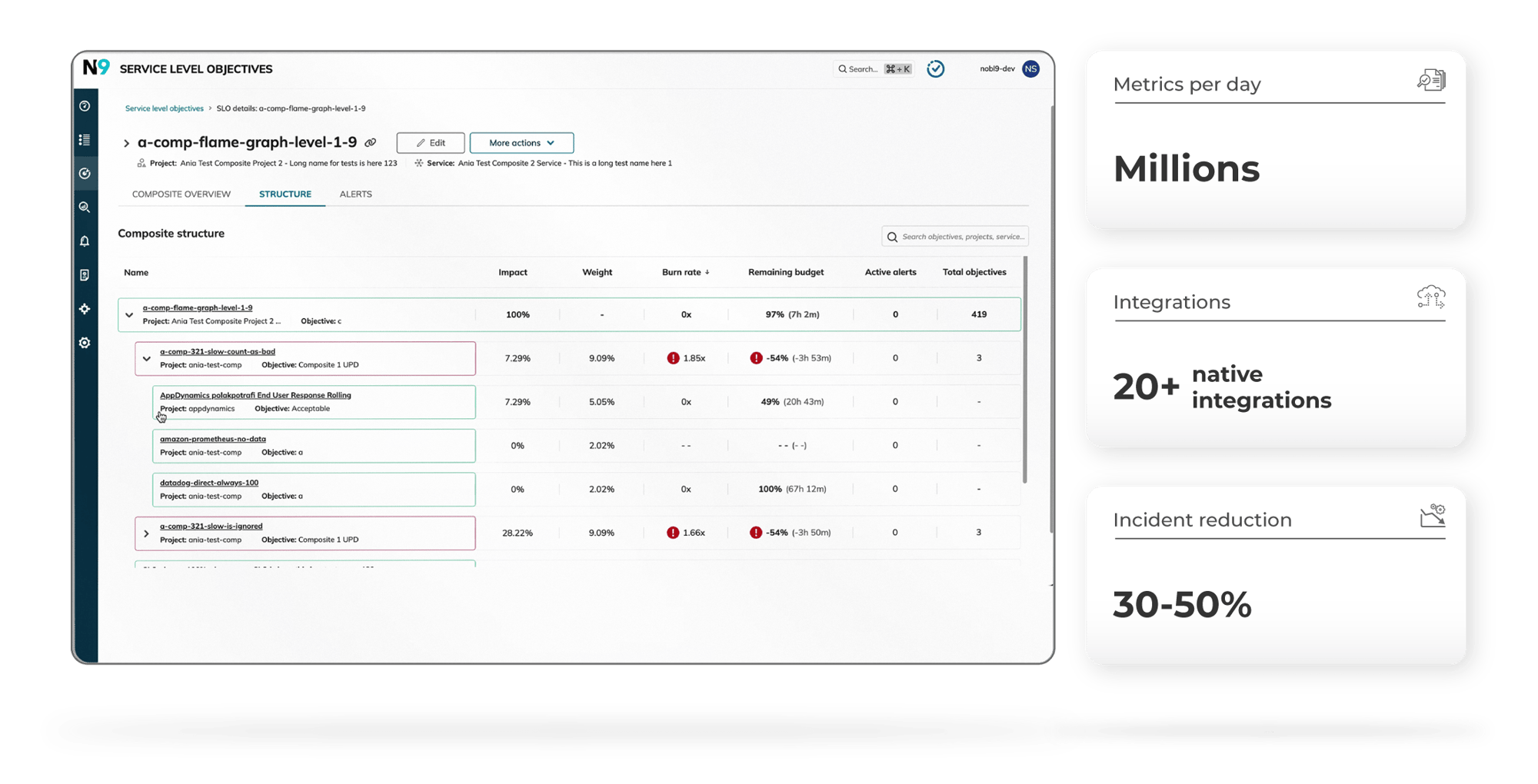
Everything in Nobl9
is designed to support the reality of making SLOs work in modern engineering environments:
- SLO creation that’s guided, policy-based, and repeatable
- Full integration with your development lifecycle through GitOps, CI/CD, and APIs
- Visibility across systems and services, no matter where your data comes from
- Alerts that reflect real customer experience, not just raw thresholds
- Reporting that connects reliability to product, operations, and executive priorities
We don’t assume you already know exactly what to measure, or that your teams all work the same way. We provide the structure and guardrails to make SLOs adoptable, trustworthy, and repeatable across teams, tools, and environments.
You don't need to start over.
You don't need to rip out your monitoring stack.
You just need the system that makes SLOs actually work.
contact usReliability is Mission Critical
Reliability is More Than Just Outages
We all know the devastating impact of outages - the loss of revenue, the hit to brand image, the churn, the PR nightmare, and the all-hands scrambling that backburners projects and pushes back future revenue streams. But reliability is more than just ensuring your application is available as often as possible - it’s also about ensuring that your application performs reliably on a daily basis.
In an environment where switching costs are negligible, customers have a low threshold of tolerance for underperforming experiences. For every outage, there are countless examples of poor, frustrating performance that go unseen by organizations. These micro-outages - sometimes affecting a small segment of users for a brief period of time, sometimes affecting just one user - are massive, hidden issues that prevent revenue-driving interactions and create churn.
Nobl9, with our SLO-centric approach to reliability, brings visibility to these occurrences, empowering product teams to quickly identify and bring attention to issues that don’t cause an outage but that negatively impact their users’ experience.
Tolerating Non-Critical Errors is Key to a Strategic Reliability Program
SLOs operate with what’s known as an “error budget,” that is, the number of times a Service Level Indicator (SLI) fails to meet its target metric. There is no such thing as a good error, but by testing SLIs over historical data when setting up an SLO allows you to identify an acceptable error rate.
Some errors should be considered non-critical - for example, an authentication gateway that immediately tries again when an error occurs should be considered less critical than a payments API that simply stops after an error. Using SLOs with Nobl9 allows you to be strategic with your error tolerance, putting emphasis on SLIs that directly impact or impede the customer’s journey. Doing so will allow you to not only focus your efforts on the everyday user experience, but to strategically distribute your IT investments into areas that affect your real business goals.
Don’t Make Your SREs Re-Invent the Wheel
Your engineers already have their preferred tools in place to monitor and observe their particular parts of your IT infrastructure. They may have Datadog, CloudWatch, Splunk, New Relic, etc. - however they’re capturing metrics, events, logs and traces, ripping it out and replacing it is both unnecessary and likely to be met with significant pushback.
Nobl9 is platform agnostic. Your engineering teams’ existing tools can be pulled in either via one of our purpose-built integrations or by using our SLI Connect data ingestion engine. Queries can be run using the data source’s native querying language, and your Nobl9 SLO will normalize the data for an accurate, actionable single pane of glass view of what matters most to your users’ daily experience.
Making Sense of the Data
An ongoing challenge in the world of site and application reliability is actually taking meaning from the metrics. Infrastructure and application metrics are often extremely specialized, meaning that for anyone who isn’t an engineer focused on the system or service being measured may not be able to easily understand what the data actually means. Often this leads to de facto top-level metrics like nines of uptime.
Nobl9 makes it easy to understand the actual reliability of an application at a glance. Our Reliability Roll-Up Reports are incredibly useful, distilling the complexity of reliability of an application spanning a variety of systems and services into a percentage-based Reliability Score. With this, you’ll know at a glance how reliable your application actually is, without having to have a ton of technical knowledge and without oversimplifying everything into a count of nines.




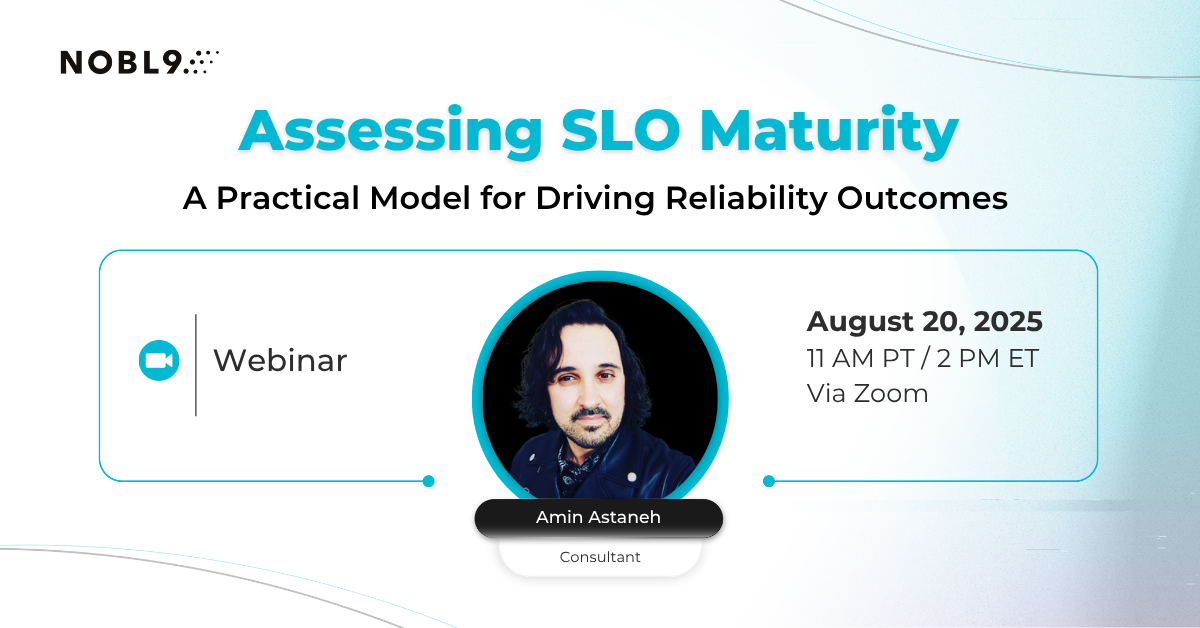
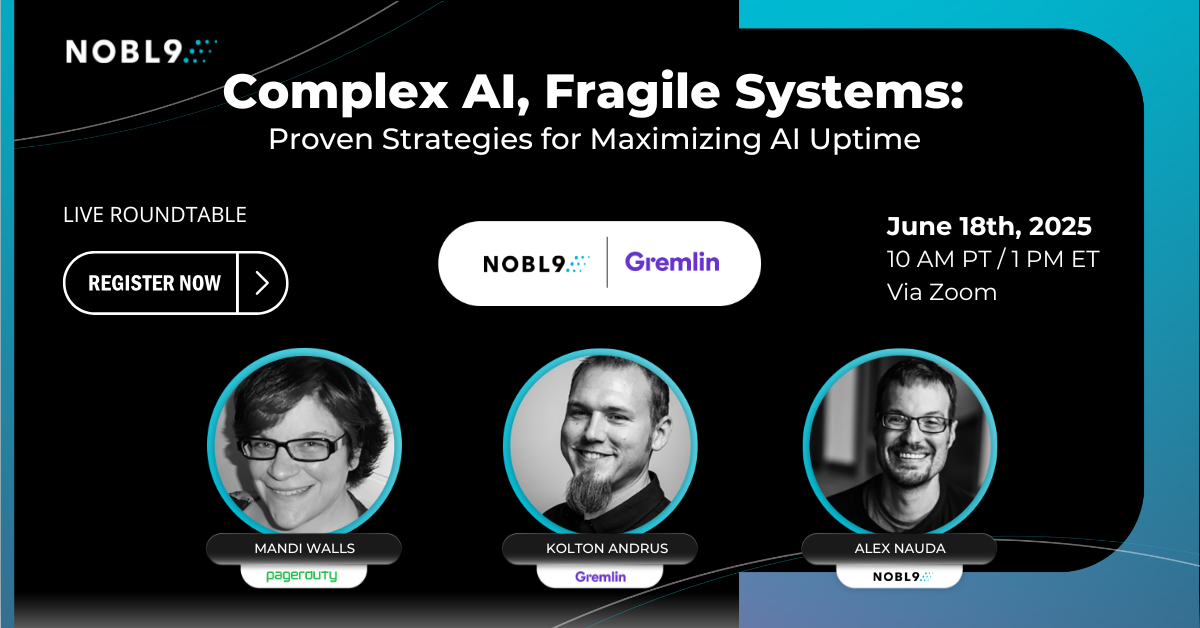



.png?width=1200&height=628&name=Building%20Reliable%20E-commerce%20Experiences%20(34).png)

.png?width=1200&height=628&name=Building%20Reliable%20E-commerce%20Experiences%20(33).png)






.jpg?width=885&height=590&name=gr-stocks-Iq9SaJezkOE-unsplash%20(1).jpg)

